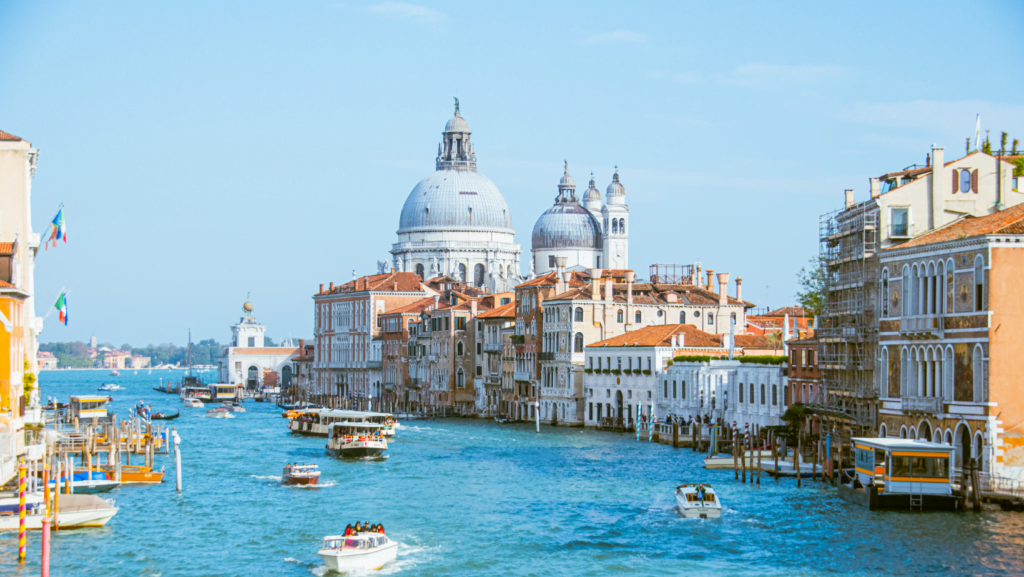Rome, Caput Mundi, the “Capital of the World” is a city unlike any other. People call it “The Eternal City” not only because of its long history, but because its stories seem to never die. Walk through its cobbled streets, sit in its piazzas, or touch the stones of its ruins, and you may feel something more than history. You may feel the presence of voices, whispers, and forgotten tales that still linger.
Here are some of the most fascinating and mysterious stories that have been told about Rome for centuries.
The She-Wolf and the Birth of Rome
The story begins along the banks of the Tiber River. A king had ordered two infants, Romulus and Remus, to be cast into the water to die. The river carried them to safety instead, where they were left in the wilderness.
It was here that a she-wolf found the helpless children. Instead of tearing them apart, the beast bent her head and nursed them, her milk keeping them alive. In Roman culture, this image became sacred: the wild wolf, the protector, the mother of Rome.
Later, a shepherd named Faustulus discovered the twins and raised them. They grew strong, fierce, and ambitious. When they were older, the brothers decided to build a city. But pride stood between them. They could not agree on who would rule or where the city should stand. In anger, Romulus killed Remus, striking his own twin to the ground.
Romulus stood over the lifeless body and declared, “This city will rise, and it shall bear my name.” That day, Rome was born.
Romans often repeated the saying: “Rome was born in blood, nourished by milk, and guarded by destiny.”
The Colosseum and the Restless Spirits
The Colosseum is Rome’s greatest symbol of power, yet it is also one of its most haunted places. Built for gladiatorial combat, it became an arena where men fought beasts, slaves fought for freedom, and blood soaked into the sand.
Imagine standing in the middle of the arena two thousand years ago. The emperor sits in his seat of honor. The crowd shouts “Ave, Caesar!”. The gates open. A lion leaps out with a roar. A gladiator grips his sword, his life depending on strength and luck. One falls, and the other raises his arm toward the emperor, waiting for the famous gesture: thumb raised for mercy, thumb lowered for death.
Those who died in the arena were often nameless, but their voices were not forgotten. For centuries, people have spoken of strange happenings in the Colosseum. Some say they have heard footsteps on empty stone corridors. Others have heard clashing steel or the roar of an invisible crowd.
A monk once wrote: “I walked at night in the Colosseum, and I heard voices crying out in sorrow, voices without bodies.”
There is an old prophecy tied to this place:
“As long as the Colosseum stands, Rome will stand. When the Colosseum falls, Rome will fall. When Rome falls, the world will fall.”
Nero, the Emperor Who Would Not Die
Nero was one of Rome’s most feared rulers. He was blamed for the great fire that destroyed much of the city. People said he stood on a balcony, watching the flames rise while he played music. Whether true or not, the story clung to him forever.
Nero was cruel, paranoid, and despised. When he finally died, many Romans breathed a sigh of relief. Yet their relief did not last. Soon, rumors spread across the empire that Nero was not truly gone. Some believed he had escaped in secret and would one day return.
For years, men appeared pretending to be Nero. They wore his likeness, sang his songs, and claimed his throne. These “False Neros” stirred fear wherever they went, because many believed the real emperor’s spirit lingered in the shadows, waiting.
Romans whispered: “Nero is not dead. He sleeps. He will rise again, smiling in the dark.”
The Statue That Spoke
Near Piazza Navona stands an ancient and broken statue called Pasquino. At first, it was simply a fragment of old marble. But in time, it became something more.
In the fifteenth century, people began attaching handwritten notes to it during the night. These notes mocked the rich, insulted corrupt rulers, and criticized the Pope. By dawn, the statue “spoke” with words of rebellion. Crowds would gather in the morning to read what Pasquino had to say.
One conversation was once imagined like this:
“Who dares mock the mighty Pope?”
“The statue does. Stone cannot be silenced.”
The rulers hated it, yet they could not silence it. The Pasquino statue became known as the Talking Statue of Rome, a reminder that truth often finds its way through the unlikeliest of voices.
The Mouth of Truth
In the church of Santa Maria in Cosmedin there rests a huge marble disk carved with the face of a man. It is called La Bocca della Verità, the Mouth of Truth.
Legend says that if someone tells a lie while placing their hand inside its mouth, the stone jaws will snap shut and bite off their hand.
An old tale tells of a woman accused of betrayal. She was ordered to put her hand inside the Mouth of Truth. Before she did, she arranged a plan with her secret lover. As she walked to the statue, the man kissed her in front of everyone. She then placed her hand inside the mouth and declared, “I have never kissed any man other than my husband, and this man here.” It was technically true. The statue spared her hand.
Mothers in Rome used to warn their children: “Do not lie, for even stone can taste false words.”
The Trevi Fountain and Its Promises
The Trevi Fountain is one of the most beautiful fountains in the world, but it is also filled with secrets. The tradition is simple: throw a coin into the fountain with your right hand over your left shoulder. One coin means you will return to Rome. Two coins mean you will fall in love. Three coins mean you will marry.
But an older legend warns that the fountain listens. If you make a careless wish, it may bind you to it. One traveler once joked as he tossed three coins, “I shall marry the first person I meet tomorrow.” The next morning, he met a woman, and within a year, they wed. The story became one of many whispered tales about the fountain’s strange memory.
Romans said: “The fountain remembers. Water never forgets.”
The Catacombs: Rome Beneath Rome
Beneath the city of Rome lies another world. The catacombs stretch for miles, dark tunnels carved into the earth. They hold the graves of early Christians who buried their dead in secret. When persecution raged, they prayed here in silence, candles flickering in the underground chambers.
Travelers who enter the catacombs often speak of an eerie stillness. Some say they have heard soft voices chanting in Latin. Others have felt a cold hand brush against them in the dark. Many refuse to walk too far, fearing that they will lose their way and never return.
An old inscription carved into the walls reads: “In darkness, we found light. In silence, we found faith.”
Final Reflection
Rome is not only history. It is a city of myths, of shadows, of secrets that live alongside its ruins. Every statue has a story. Every fountain remembers a wish. Every stone may carry the echo of a voice from centuries past.
Stand in Rome today, and you stand in two worlds at once. One is alive and modern, filled with voices and cars and lights. The other is ancient, filled with whispers, legends, and the breath of eternity.
Have you walked the Appian Way at midnight? Seen a shadow where no one stood? Share your own Roman mystery in the comments below. And remember: in Rome, even the stones have stories to tell.




Thank you I have just been searching for information approximately this topic for a while and yours is the best I have found out so far However what in regards to the bottom line Are you certain concerning the supply
Your writing is a true testament to your expertise and dedication to your craft. I’m continually impressed by the depth of your knowledge and the clarity of your explanations. Keep up the phenomenal work!
Somebody essentially lend a hand to make significantly posts I might state That is the very first time I frequented your web page and up to now I surprised with the research you made to create this particular put up amazing Excellent job
Your writing is like a breath of fresh air in the often stale world of online content. Your unique perspective and engaging style set you apart from the crowd. Thank you for sharing your talents with us.
Your blog is a breath of fresh air in the crowded online space. I appreciate the unique perspective you bring to every topic you cover. Keep up the fantastic work!
Wow amazing blog layout How long have you been blogging for you made blogging look easy The overall look of your web site is magnificent as well as the content
Thanks I have just been looking for information about this subject for a long time and yours is the best Ive discovered till now However what in regards to the bottom line Are you certain in regards to the supply
Somebody essentially lend a hand to make significantly posts I might state That is the very first time I frequented your web page and up to now I surprised with the research you made to create this particular put up amazing Excellent job
Your articles never fail to captivate me. Each one is a testament to your expertise and dedication to your craft. Thank you for sharing your wisdom with the world.
Your blog is a constant source of inspiration for me. Your passion for your subject matter shines through in every post, and it’s clear that you genuinely care about making a positive impact on your readers.